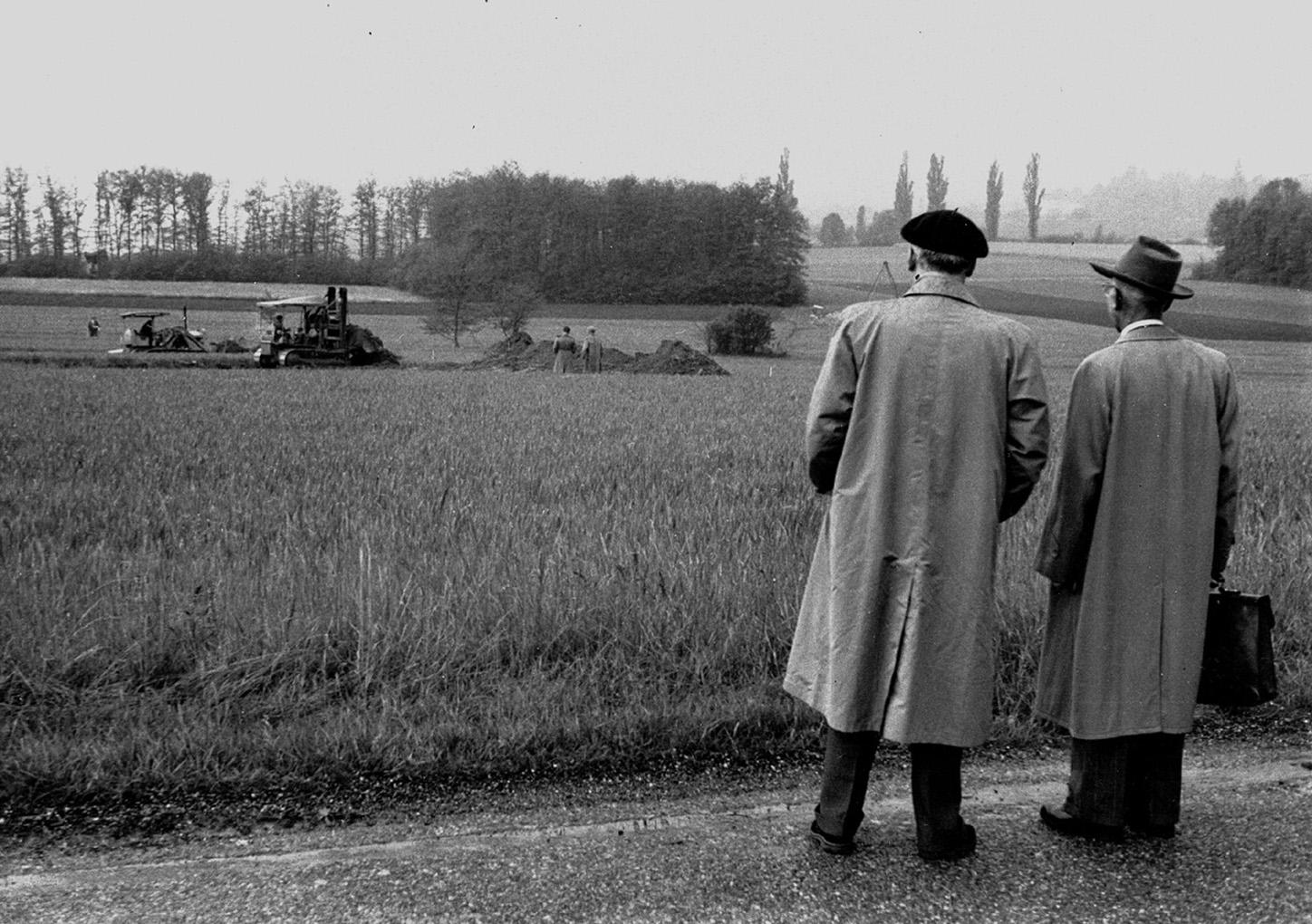CERN70: The Laboratory takes shape
1 February 2024 · Voir en français
Part 2 of the CERN70 feature series. Find out more: cern70.cern
Franco Bonaudi, one of the pioneers of CERN's accelerators, looks back at the Laboratory's early years, during which everything had yet to be invented

Geneva was chosen as the site of the CERN Laboratory at the third session of the Provisional Council in 1952. The city’s central position in Europe, its neutrality during the war and the fact that it was already home to international organisations played a decisive role.
Construction of the Laboratory began in 1954. While waiting for their premises, the first members of the CERN community moved into the Geneva Institute of Physics and worked from a building and barracks near the airport. The theory group had already been founded in 1952 at the Institute of Theoretical Physics in Copenhagen alongside the Nobel Prize-winning physicist Niels Bohr. It moved to Geneva in 1957.
Two accelerator projects were launched in parallel: an innovative accelerator of unprecedented power, the Proton Synchrotron (PS), and, pending its commissioning, a more conventional machine, the Synchrocyclotron (SC). The SC, built in just three years, went into service in 1957, enabling physicists to get CERN's first experiments up and running quickly.
Recollections
We all started together in huts at Geneva airport in 1954 ... about 150 people of all nationalities. We quickly got used to working together and communicated with each other in bad English.
Franco Bonaudi

Franco Bonaudi became involved in the great CERN adventure before the Organization was even founded. Given the responsibility of coordinating the first accelerator project, the Synchrocyclotron, he supervised the construction work. He went on to take part in the construction and operation of many accelerators at CERN and held the post of Director of Accelerators from 1976 to 1978.
“In 1951, I was at the Turin Polytechnic when Edoardo Amaldi, one of CERN’s founding fathers, contacted the teaching staff to find out whether they knew of any young scientists who would be interested in taking part in the construction of a particle physics laboratory. I went to Rome to meet Giuseppe Fidecaro, Amaldi’s right-hand man, and it was there that I learnt that the idea was to build a synchrocyclotron. I agreed to participate and left for Liverpool, where I took part in the design studies.
We worked in various European institutes for two years without even knowing where the machine was going to be built. We all started together in huts at Geneva airport in 1954. At that time, the Laboratory consisted of about 150 people of all nationalities. We quickly got used to working together and communicated with each other in bad English. We felt rather lonely, being new to the area, and so we became very close. I remember that the CERN phone directory contained everyone’s home number. Some real friendships were formed.

My colleague Joop Vermeulen and I were the first to move onto the site of the new Laboratory. We erected a hut with windows, right in the middle of the worksite, and stayed there for two years. The cyclotron was completed in only three years, which was fantastic. We had great enthusiasm and were often required to be inventive. I remember, for example, that we had no heating during our first winter at the SC. We managed to borrow some cast-iron resistors from the Geneva trams. Thanks to this improvised electric heating system, we were able to keep warm all winter. I could tell you dozens of stories like that …”
----
This interview is adapted from the 2004 book “Infinitely CERN”, published to celebrate CERN’s 50th anniversary. Franco Bonaudi passed away in 2008 at the age of 80, read more about him in the CERN Courier.
